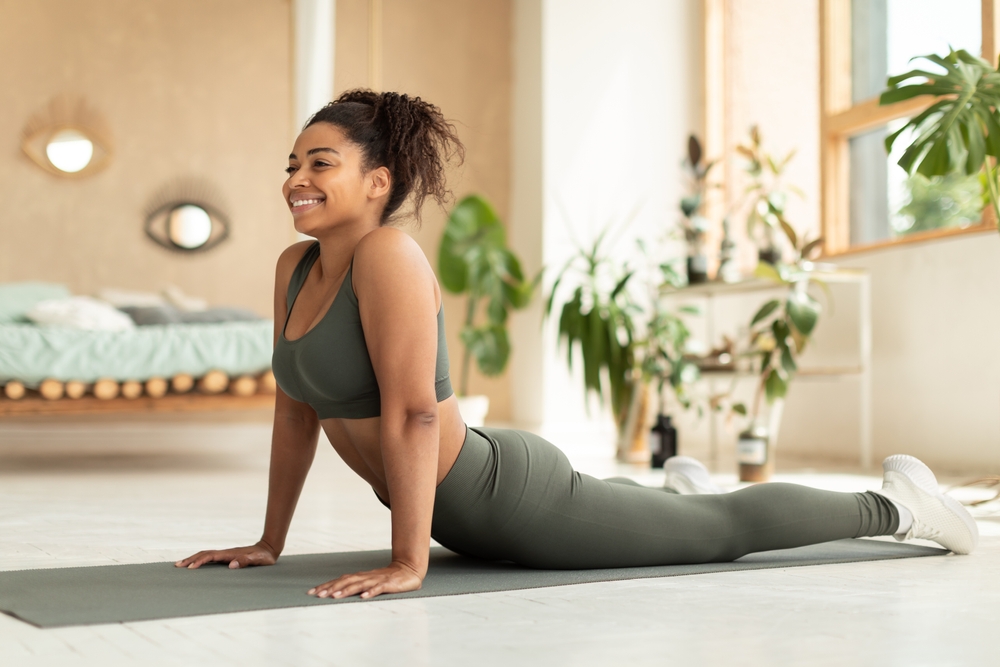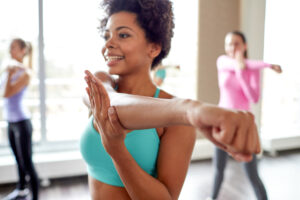Want to reduce premenstrual syndrome (PMS) symptoms and boost your mood while you’re on your period? Try getting active — it can help you have a better period — period! And while you may not have heard much about the connection between being active and decreasing PMS symptoms, the science backs it up. Below you’ll find some great exercises for period cramps and PMS.
Recommended activities for each phase of your menstrual cycle
Days 1-14: The follicular phase
During this phase, estrogen and testosterone levels are on the rise, making it an ideal time for muscle strengthening and endurance training. Consider doing the following activities during this phase: running, high-intensity interval training (HIIT), cycling, weight training or bodyweight conditioning.

Ovulation
Estrogen levels peak to trigger ovulation, which may increase energy, stamina and mental endurance during this time, so ride that wave with swimming, HIIT, cycling, running or power walking!
Days 15-28: The luteal phase
During this phase, progesterone levels rise and are at their highest. Once your body recognizes that you’re not pregnant, your estrogen and progesterone levels drop to trigger your period. After you’ve ovulated, you may feel a bit sluggish, especially following the increased energy you may have had from the days before. These fluctuations may leave you feeling a little tired and less motivated to participate in physical activity. Take it easy with low-impact cardio, walking, hiking, yoga or Pilates.
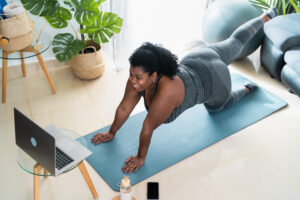
Are periods and PMS ‘cramping’ your style? Try these exercises for period cramps:
1. Cat/Cow: Stretch your abs while flexing your spine
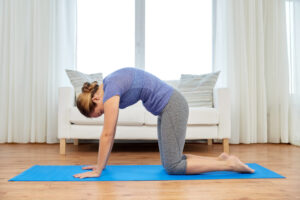
- Start on your hands and knees, aligning your wrists underneath your shoulders and your knees underneath your hips, keeping your spine long and your head in line with your spine.
- Tilt your pelvis back so that your tailbone sticks up (imagine a cow mooing) and your belly drops (keep it tight!).
- Look up toward the ceiling without straining your neck.
- Reverse the position by tipping your pelvis forward and tucking your tailbone in (think angry cat).
- Draw your navel toward your spine and drop your head so that you’re looking down towards your belly.
2. Downward Dog: Strengthen your arms & legs while stretching your chest, lats & calves
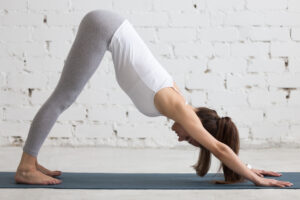
- Start on all fours then raise your knees off the mat while shifting your stomach toward your thighs.
- Lift your hips up as you straighten your legs, keeping your toes pointing forward and your knees soft.
3. Child’s Pose: Stretch your lower back & help relieve bloating
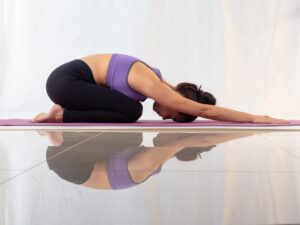
- Kneel on the floor.
- Touch your big toes together and sit on your heels, then separate your knees so that they’re about as wide as your hips.
- Lay your torso down between your thighs, bringing your forehead toward the floor.
- Lay your hands on the floor alongside your torso, palms up, and release the front of your shoulders toward the floor.
4. Cobra: Stretch your abs, flex your spine & enhance your posture
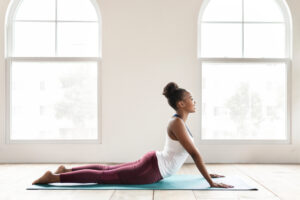
- Place your palms flat on the ground directly beneath your shoulders, with your elbows tucked by your side (as if you have magazines tucked under your arms).
- Lift your chest off the floor, taking your shoulders off the floor while keeping your lower ribs down. Be sure to keep your elbows hugging your sides and your eyes forward.
5. Butterfly: Stretch your inner thighs, lower back & ankles
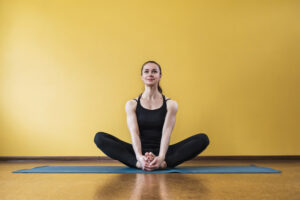
- Sitting tall on the floor, bend your knees and bring your feet in as close as possible, with your soles together.
- Hold your feet with your hands, then gently press your thighs and knees down toward the floor.
For more information on how physical activity can improve your daily life, speak to a health-care provider.


